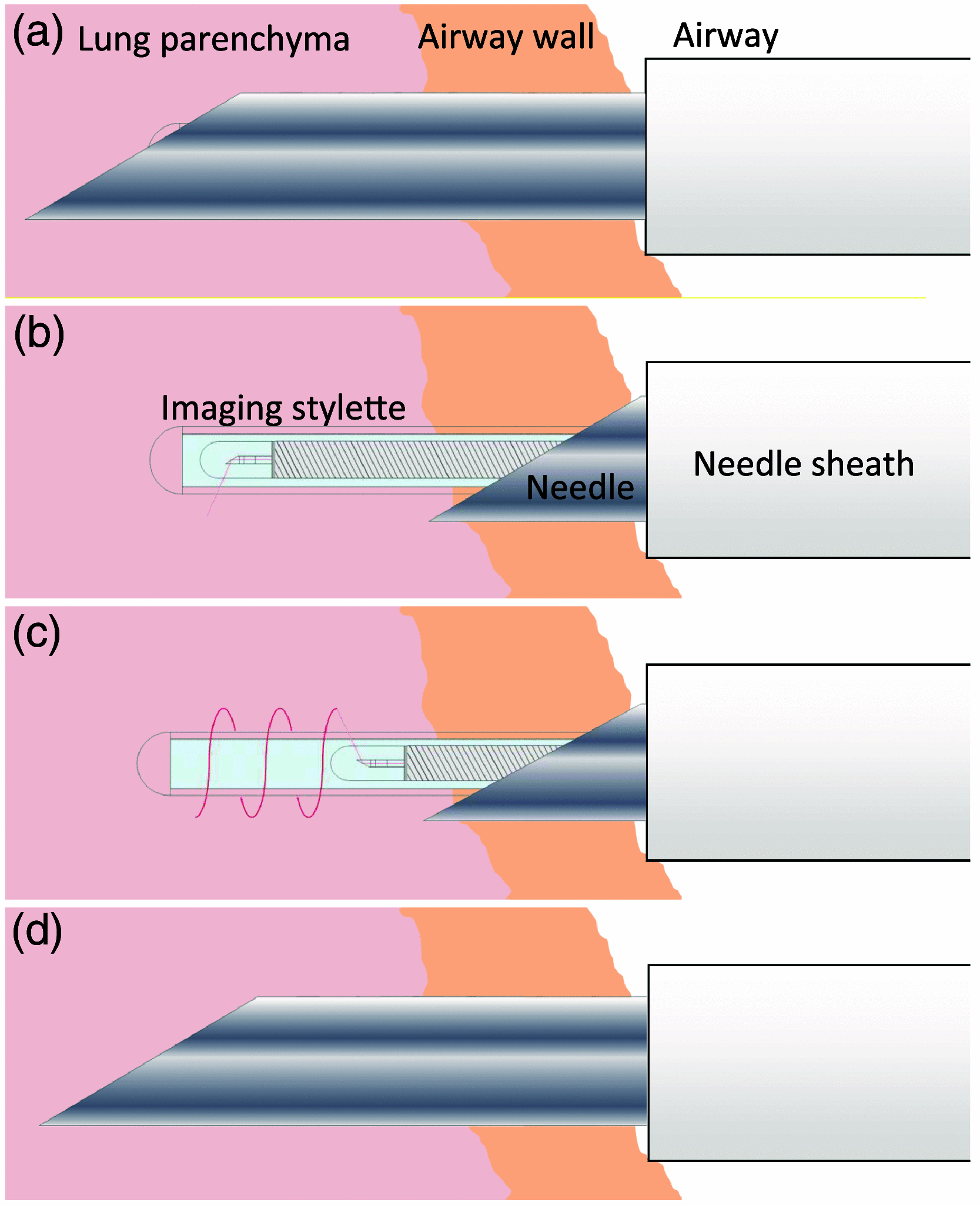Feasibility of combined optical coherence tomography and autofluorescence imaging for visualization of needle biopsy placement
- PMID: 33084256
- PMCID: PMC7573340
- DOI: 10.1117/1.JBO.25.10.106003
Feasibility of combined optical coherence tomography and autofluorescence imaging for visualization of needle biopsy placement
Abstract
Significance: Diagnosis of suspicious lung nodules requires precise collection of relevant biopsies for histopathological analysis. Using optical coherence tomography and autofluorescence imaging (OCT-AFI) to improve diagnostic yield in parts of the lung inaccessible to larger imaging methods may allow for reducing complications related to the alternative of computed tomography-guided biopsy.
Aim: Feasibility of OCT-AFI combined with a commercially available lung biopsy needle was demonstrated for visualization of needle puncture sites in airways with diameters as small as 1.9 mm.
Approach: A miniaturized OCT-AFI imaging stylet was developed to be inserted through an 18G biopsy needle. We present design considerations and procedure development for image-guided biopsy. Ex vivo and in vivo porcine studies were performed to demonstrate the feasibility of the procedure and the device.
Results: OCT-AFI scans were obtained ex vivo and in vivo. Discrimination of pullback site is clear.
Conclusions: Use of the device is shown to be feasible in vivo. Images obtained show the stylet is effective at providing structural information at the puncture site that can be used to assess the diagnostic potential of the sample prior to collection.
Keywords: animal study; autofluorescence; biopsy; lung imaging; optical coherence tomography.
Figures








References
-
- McGuire A. L., et al. , “The diagnostic accuracy and sensitivity for malignancy of radial-endobronchial ultrasound and electromagnetic navigation bronchoscopy for sampling of peripheral pulmonary lesions: systematic review and meta-analysis,” J. Bronchol. Interv. Pulmonol. 27, 106–121 (2020).10.1097/LBR.0000000000000645 - DOI - PubMed

